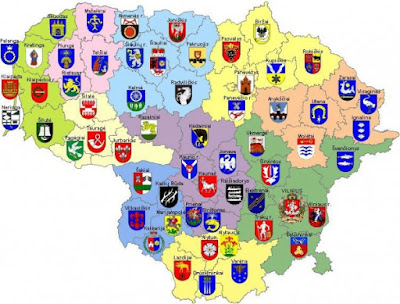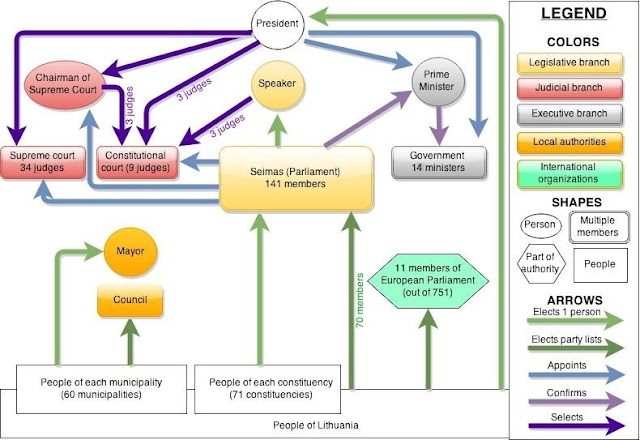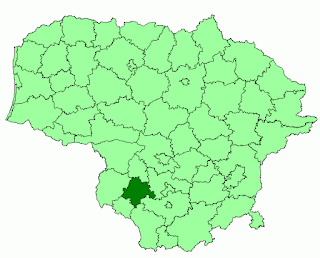Municipalities (part 1)
 |
| Municipaties in Lithuania (each municipality is represented by its coat of arms) (source: http://www.ngw.nl/heraldrywiki/index.php?title=File:Lithuania_municipalities_COA_map.jpg) |
Basics
In Lithuania there are 59 municipalities. These bodies are administrated by the munipacility's council (led by the mayor) and administration (led by the director).
Council basically is observing municipality's agencies and etc., while municipality's administration is preparing evidence for council's meetings, preparing municipality's bugdet and etc.
Municipality councils have one meeting each month (if necessary - two meetings if e. g. there is need to appoint interim mayor).
Council basically is observing municipality's agencies and etc., while municipality's administration is preparing evidence for council's meetings, preparing municipality's bugdet and etc.
Municipality councils have one meeting each month (if necessary - two meetings if e. g. there is need to appoint interim mayor).
'Size Matters'
Size of municipality's council depends from number of the people living in the municipality. By the Local self-government election law (version of this law in Lithuanian language) size of the municipality varies as following:
number of elected councilors - number of registered citizens in municipality
number of elected councilors - number of registered citizens in municipality
- 15 councilors - fewer than 5000 registered citizens
- 17 councilors - between 5000 and 10 000 registered citizens
- 21 councilor - between 10 000 and 20 000 registered citizens
- 25 councilors - between 20 000 and 50 000 registered citizens
- 27 councilors - between 50 000 and 100 000 registered citizens
- 31 councilor - between 100 000 and 300 000 registered citizens
- 41 councilor - between 300 000 and 500 000 registered citizens
- 51 councilor - more than 500 000 registered citizens
Size have financial effects on councillors - the smaller is number of the people living in the municipality, so less extra payment (for each councillor) or salary (for mayor) it gets. Also when number of the people living in the municipality, less seats in incoming municipalities elections council will have.
How to become municipality's council member ?
Unlike United Kingdom's local councils/authorities, Lithuania's municipality council members are elected by proportional system, except mayor. In this electoral system municipality's council elected in the begining of the term might be different by its composition from the one, which be by the end of the term.
These changes could be caused by sitting council member's death, election to the other office (European Parliament, national parliament (Seimas), president, government or mayor), resignation due to various reasons (charges for criminal activity, seekage for more time with family and etc.).
How to become municipality's mayor ?
 |
| Širvintai district's mayor Živilė Pinskuvienė with mayor's insignia in 2015 (source: http://www.sirvinta.net/wp-content/uploads/inau1.jpg). |
Exceptional place in municipality's council belongs to mayor. He/she is (as a mayor) municipality's representative in Lithuania and beyond. As political figure mayor is proposer of municipality's development plan and coalition's (if no party in council doesn't have majority seats) formateur.
As municipality's member he/she proposes laws and releases it's own orders. Final position is council's chairman in which he/she chairs council's meeting, proposes council's meeting plan.
As municipality's member he/she proposes laws and releases it's own orders. Final position is council's chairman in which he/she chairs council's meeting, proposes council's meeting plan.


Komentarai
Rašyti komentarą